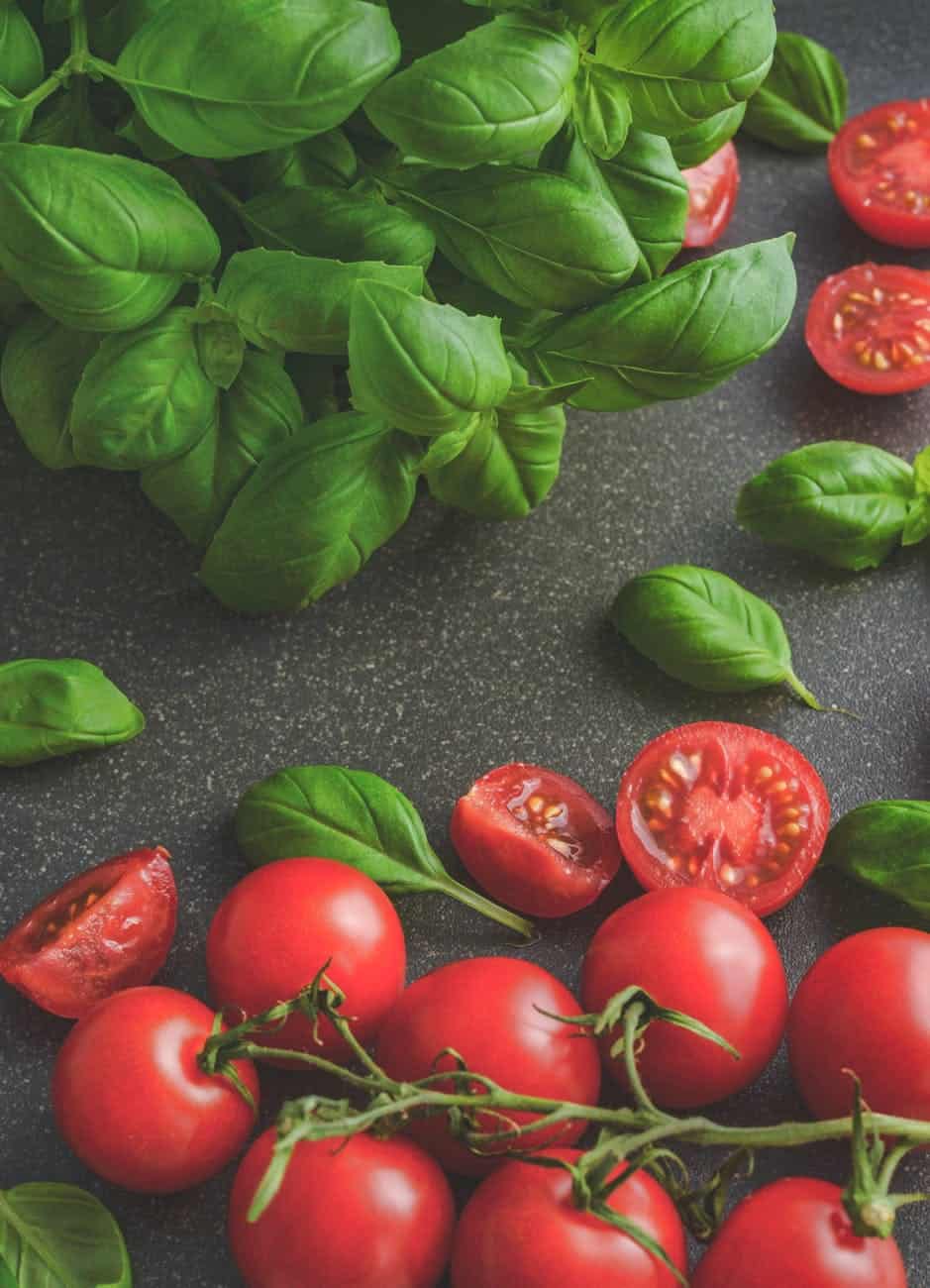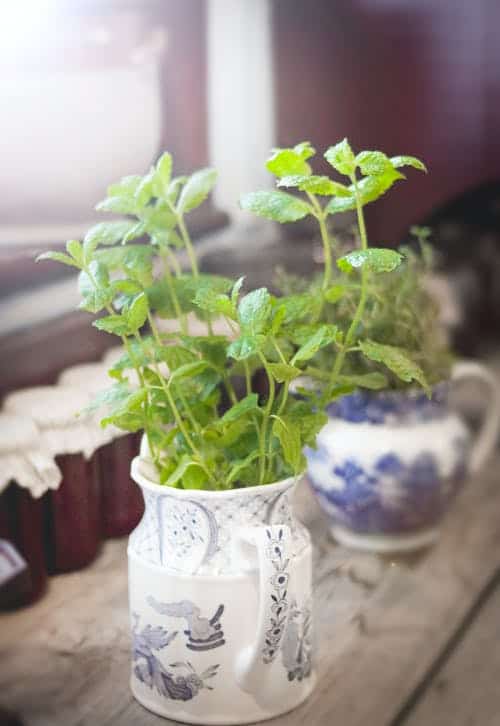Contents

Herbs are a must-have in your garden. If you’re a fan of the whole farm to table’ system, then you can have as many fresh herbs as possible growing in your garden. Most importantly, fresh Basil will come in handy for many savory dishes you’ll prepare at home, such as for cooking soups, making sandwiches, or as a topping for pizza. While it’s easy to grow, you have to be in it for the long haul because it is a perennial plant. Here are some basics to know to ensure your successful attempts at herb gardening.
Basil Basics
It’s a Herb: It is well established that Basil is a fragrant herb. Like most herbs, it is native to the Mediterranean.
Basil Plant Propagation: Basil propagation can be sexual by using basil seeds or asexual by basil cuttings from the mother plant.
Planting Season: The perfect time to plant Basil is during the late spring season.
Planting Soil: To grow a healthy plant, plant in Soil any potting soil mix that is well-draining and has the essential nutrients needed for optimum growth.
Exposure to Sunlight: Whether you choose to plant Basil in your herb garden or on sunny windowsills indoors, ensure that it has access to direct sunlight so it’ll receive at least six hours of sunshine daily.
Plant Varieties: Before planting, there’s a wide variety of Basil to choose from. Common basil varieties include Genovese basil, lemon basil, lime basil, and cinnamon basil, to name a few.

The Perfect Time to Propagate Basil
Basil is best grown during the spring season or 2-4 weeks after the last frost. During this period, the temperature will be ideal at 21°C (70ºF). Also, plant in a sunny location such as a bright windowsill or a sunny spot in your garden, as it’ll ensure that you have a healthy basil plant. This will make the plant thrive. Finally, you need to grow Basil indoors if you live in a cold region or have a basil plant during winter.
Good to Read: Propagating Mint – Know Root Structure, Growth and Care
Growing Basil from Cuttings
Cuttings are the best way to propagate Basil, but not the only viable way. Growing from cuttings gets the job done in about half the time compared to growing Basil from seed. More so, you can skip the anguish over whether most of the seeds will germinate. The only thing you will need to look out for is the growth of roots. Once healthy roots have developed, it becomes a tree and is ready for planting.

Where to get Basil Seeds and Cuttings
Head over to the local grocery store in your area if you’re at a crossroads regarding where you could purchase basil cuttings from. This is an ideal option because there’ll be a lot of varieties to choose from. Alternatively, you can get basil cuttings from a nearby garden. This option is somewhat preferable as you can easily select a type that you are familiar with.

How to Cut Basil
Don’t panic if you need to get cuttings from a parent plant and know how to. I’ve got you. Grab a cutter, pair of kitchen scissors, or a sharp knife and cut as close to the lowest set of leaves on the stem. Any leaves at the bottom of the stem should be removed and disposed of or used in the kitchen. We will, however, need leaves to remain at the top of the cutting as they will be instrumental in photosynthesis. We only need about 1-2 inches of the stem; any more than this is excessive and can be clipped off.
Propagating Basil from Cuttings
After getting your basil cuttings, we can proceed to propagate the plant. To do this, you’ll have to:
- First, soak the basil cuttings in water.
- Transplant the cuttings.
- Care for the basil plant.
- Transplant to the ground.
- Prune your basil plant.
Soaking Basil Cuttings in Water
Fill several glass containers with tap water or any freshwater of any kind. Partially immerse your Basil in water, ensuring that the leaves remain outside the water. You should also make sure that the water you are using is non-chlorinated. You can soak multiple cuttings in one container as long as the leaves all remain out of the water.
After that, you will need to store the containers somewhere with access to copious amounts of bright sunlight to help facilitate photosynthesis. This part is essential as the leaves need to continue with photosynthesis or the cutting dies. You can change the water weekly to keep it fresh and avoid attracting pests.
The entire soaking process will last for about 3-4 weeks; the cuttings will have developed a root structure. This root growth will enable the plant to function and grow as new plants when they are eventually planted. Therefore, 3-4weeks is the ideal time to develop an intricate root system that is transplantation-ready.
Transplanting your cuttings
Sometimes, not all your basil cuttings will develop the necessary root system for transplanting, and thus, they must be discarded. The basil cuttings that develop the required root system should be identified and prepared for transplanting. You need to leave basil cuttings in water till you are ready to transplant them.
This is because once the root hairs dry out, the rest of the plant will soon follow. Thus, only undertake this step after you have prepared your garden bed and pot indoors. Once you have the Soil set in your pot, plant the basil cutting in it. You will need your hand to stretch out the roots of the cuttings, giving them more surface area to cover in the Soil. It is possible to plant more than one Basil in a pot or use multiple pots. You could even use mason jars.
You should know that if you plant more than one Basil in a pot, you will have to transplant it soon. The bigger the Basil gets, the smaller the space available becomes, and nutrients stop being enough.
Caring for the Basil Plant
Once you have the basil plant in the ground, it has become a plant on its own. You may not notice fresh growth immediately, but you should see some changes in weeks. The beauty of first planting in pots is that it allows you the opportunity to move the plant when needed. Your basil plant needs plenty of sunlight and warmth daily. So you can pick a nice sunny spot and store them there or move them to the desired place. Some people use artificial light to this effect, and if you can, there is nothing wrong with that option.
You will need to water it as much as possible, ensuring the top layer of Soil in the pot is always damp. This way, you are sure the plant has adequate access to water. You should, however, be careful not to overwater it.
Transplanting to the Ground
I don’t want to say that it is impossible to maintain a basil plant solely in a pot, but the evidence suggests so. At some point, the pot won’t support the Basil anymore, and you will probably begin to break. Therefore, you need to find a permanent location in the ground, somewhere that meets all the criteria for Basil to thrive. Once such a site is prepared, transplant the Basil and allow it to take hold. Transplanting shock can cause some of the leaves and stem to turn yellow. If you observe this, cut off the affected parts. This will create room for new growth of healthier and stronger roots and stems.
Pruning the Plant
Pruning is essential to ensure the plant retains the desired shape and produces healthier leaves. When done correctly, it will also help improve the strength of the branches and stem of the plant. You should, however, watch the pruning and allow enough leaves to remain to continue the process of photosynthesis. Prune too many leaves, and your Basil may be unable to do this, causing it to die.
The best time to prune is if you notice your Basil is growing thin. This will remove the thin stems and leaves, giving room for healthier leaves and stems.
Frequently Asked Questions
Q: How to propagate Basil
A: Cuttings are the best way to propagate Basil.
Q: How long will Basil live if I continually keep it from bolting?
A: It will probably last less than a year. It would help if you stopped this to allow your Basil produce annually.
Q: Why isn’t my Basil propagating?
A: You have probably missed something. You can dip your Basil, cutting in growth hormones if that helps.
Q: Propagating Basil, dark spot = mold
A: You should probably plant it as the dark spot is likely a result of spending too long in the water. You can alternatively remove the affective leaf, making room for new growth.
Q: Can I propagate flowering basil
A: yes, you have to cut off the flower, allowing the stems to grow as they usually would.
Want to know more about gardening ?
Fill in your email address in the form below and you'll receive all the latest updates directly in your in-box.
Thank you for subscribing.
Something went wrong.